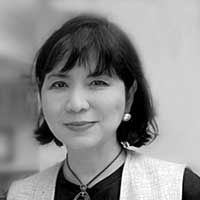The terra cotta warriors of Xi’an: One man’s monument to immortal fame

It looked like a surreal scene from a dream.
Or computer-generated imagery from one of those fantastic movies showing armies in epic or historic wars. But it was real.
What had been a must-see place on my bucket list was there before my unbelieving eyes, in its awesomely panoramic magnificence. Ever since the Terra Cotta Museum in Xi’an was opened in 1979, there has been a mad rush of tourists, cultural and history buffs to this once-unknown village in China.
The yearly count says 50 million local Chinese tourists plus two million tourists from around the world visit Xi’an. I recently joined that statistic, ready to be stunned. But at first I was too stunned to believe it.
Like Erich Von Daniken, who theorized that Stonehenge in England might have been built with the help of ancient astronauts from outer space, I found myself asking: Who really made these life-size terra cotta figures — a total of 8,000 soldiers, 130 chariots, 520 horses, 150 cavalry horses, plus acrobats, dancers and musicians with instruments, weapons and artifacts — all with intricate details and with no two faces alike?
A total of two million workers were used and it took 38 years — from 247 BC to 208 BC — to build this collection for Emperor Qin Shihuang, the first emperor in Chinese history. Like the pyramids of Egypt, this is funerary art.
Emperor Shihuang had his army members plus all his royal accoutrements copied in terra cotta — to protect him and keep him comfortable in an underground mausoleum in the afterlife. Obsessed with achieving immortality, the emperor had a fear of death and thought he could find the elixir of life. Ironically, he died at the age of 50 and he was buried in September of 210 BC, even before his mausoleum was completed. The emperor himself had chosen the site of his burial with good feng shui at the foot of Mount Li, which was famous for its abundance of gold and jade.
All these terra cotta creations were buried for centuries until March 29,1974 when farmers digging for underground sources of water instead unearthed pottery fragments and bronze weapons. The Chinese government quickly went to work with teams of historians and workers putting together the pieces in their original site, which spans a total of 20 hectares.
Yes, these were all made centuries ago by local craftsmen in workshops and then arranged in battle formation in a total of four underground pits that were seven meters deep. The warriors’ faces were copied from real people at that time, which explains why no two faces are alike.
Craftsmen were obviously required to sign their names/workshops at the back of each work, and to date, the names of 80 craftsmen/workshops have been verified. There are still diggings and terra cotta fragments being unearthed.
The diggings also revealed tombs believed to contain the remains of thousands of officials and craftsmen who were buried alive to keep the emperor’s mausoleum site a secret.
UNESCO listed the Terra Cotta Museum in Xi’an as a world-class cultural heritage site in 1987.The site is one of the tourist spots in China which Carlos Chan, our honorary ambassador to China and founder of the Oishi food empire, has visited countless times — not as a repeat tourist, but more as a travel guide to his Filipino friends who wish to see Xi’an. Ambassador Chan has been promoting goodwill between China and the Philippines by letting each country discover the other
through tourism, business and cultural exchanges. He brings Filipino talents, notably the Loboc Children’s Choir of Bohol, to perform amid warm applause, to various cities in China.
Perhaps lost in history books is Emperor Shihuang’s greatest contribution to China — the establishment of a centralized state and the abolition of the feudal system by dividing the country into 36 prefectures. He failed to find the formula for immortality. But he achieved immortal fame by building his mausoleum and his army of terra cotta warriors.
* * *
E-mail the author at mananquilmillet@gmail.com. Follow her on FB and Instagram @milletmartinezmananquil. photos by Millet M. Mananquil



















